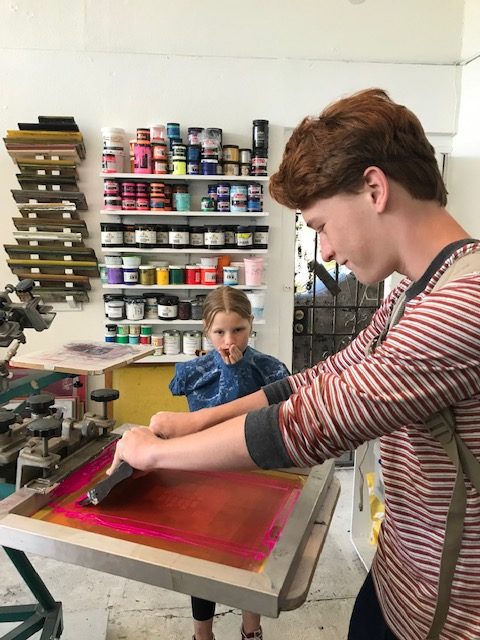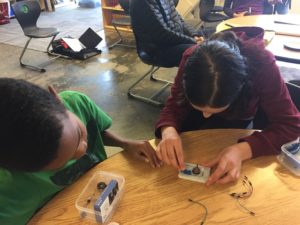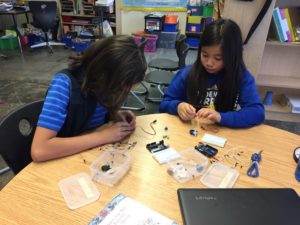This March, a small group of 4-H-ers participated in a cozy and engaging “Introduction to Silk Screen Printing” class. Over the course of two classes and one extended excursion to two professional screen printing facilities, we explored the many different styles and techniques of this intricate art.
The silk screening printing technique uses mesh to transfer ink onto a material. Stencils are used to strategically block the transfer of ink to create desired patterns on the material. We learned the basics by using 9 square inch fabrics and papers to make small designs. Next, we moved to printing designs on larger objects, like drawstring bags. Soon, cats, pears, and stars decorated satchels and postcards in black, red, and blue. It didn’t get too messy and everyone had fun.
During the last class, we traveled to The Grease Diner, a screen printing studio in Oakland. We observed a professional design being light printed by a large, bulky machine that uses UV light to transfer ink to paper. After a quick lunch at a nearby park, we travelled to All Gold Print. There, the group created a design that we got to print by hand. Each person took a turn at flooding the screen with ink and pressing it onto the paper. This project was very informative. Creating the art was as relaxing as eating ice cream on a summer day.



